Let’s do a quick mental check-in. You probably put a lot of thought into the food you eat, opting for fresh, organic choices. You likely carry a water bottle, diligently staying hydrated throughout the day. You’ve curated your diet and your fitness. But have you ever truly considered the air quality that fills your lungs more than 20,000 times a day?
It’s a startling reality that the air inside our homes, offices, and schools can be up to five times more polluted than the air outside. Modern homes are built to be energy-efficient, sealed tight to keep the elements out. While this is great for our utility bills, it also means that airborne pollutants get trapped inside with us, creating a stagnant, invisible soup of contaminants.
What are we talking about? We’re talking about particulate matter, specifically the tiny, insidious particles known as PM2.5. These are microscopic specks of dust, soot, and allergens so small they can bypass your body’s natural defenses and lodge deep within your lungs. We’re also talking about a chemical cocktail of Volatile Organic Compounds (VOCs) that off-gas from everyday items: the paint on your walls, the glue in your furniture, and the fragrances in your cleaning supplies. Add in carbon dioxide (CO2) from our own breath, pet dander, mold spores, and the silent threat of Radon gas, and you have a recipe for a host of health issues, from nagging headaches and disrupted sleep to chronic allergies and long-term respiratory conditions.
In a world where many of us spend upwards of 90% of our time indoors, taking control of our indoor environment is no longer a luxury—it’s a necessity. This is where air quality monitors transform from niche gadgets into essential wellness tools. They are your personal environmental detectives, making the invisible visible and empowering you to breathe with confidence.
As of 2025, the technology powering these devices is mature, accurate, and incredibly insightful. To help you navigate the best options on the market, we’ve done the deep dive for you.
Table of Contents
Here is our definitive guide to the top 5 essential air quality monitors you should be using right now.
1. Airthings View Plus: The Comprehensive Radon & Air Quality Hub
If there’s one device that comes closest to being the “central command” for your home’s air, it’s the Airthings View Plus. This monitor is a powerhouse of environmental sensing, renowned not just for its breadth of air quality metrics but for its inclusion of a crucial, often-overlooked sensor: Radon. Radon is a naturally occurring radioactive gas that is the leading cause of lung cancer among non-smokers, and the View Plus is one of the few consumer-grade monitors to provide continuous, long-term tracking for it.
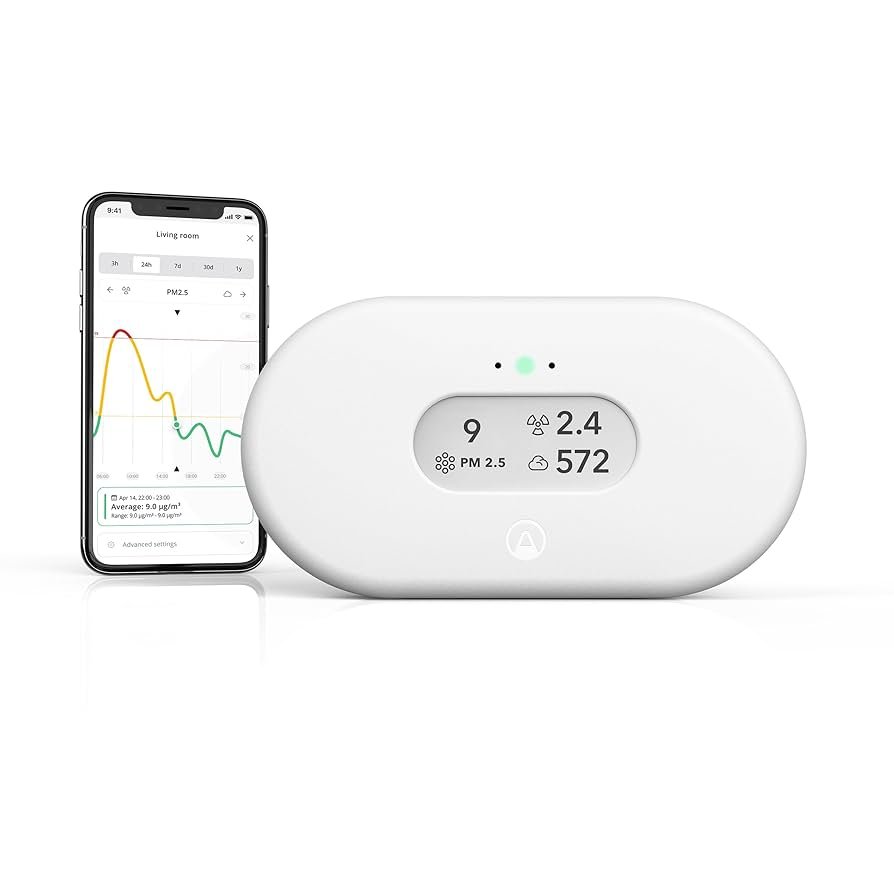
Beyond its star feature, it offers a truly comprehensive analysis of your air, tracking Particulate Matter (PM1 and PM2.5), Carbon Dioxide (CO2), Volatile Organic Compounds (tVOCs), ambient temperature, humidity, and even air pressure.
What Makes It a Must-Have Powerhouse in 2025:
- Continuous Radon Detection: Unlike traditional charcoal test kits that give you a one-time snapshot, the View Plus provides continuous, long-term radon data. This is critical because radon levels can fluctuate significantly day-to-day and season-to-season. This ongoing monitoring gives you a true understanding of your exposure and the effectiveness of any radon mitigation systems.
- Customizable “Calm Tech” Display: The device features a low-power e-ink display that is incredibly easy on the eyes. The “Calm Tech” philosophy means it won’t overwhelm you. You can wave your hand in front of it for a simple color-coded status (Green, Yellow, Red) or customize the display to show the specific metrics you care about most.
- Excellent App & Smart Home Integration: The Airthings app is polished, intuitive, and provides detailed graphs, insights, and reports. It seamlessly integrates with smart home ecosystems like Amazon Alexa and Google Assistant, allowing you to ask for an air quality update with your voice. It also works with IFTTT (If This Then That), allowing you to create powerful automations with other smart devices, like turning on a fan if VOCs get too high.
- Battery or USB Powered Flexibility: You can power it via USB-C or use the included AA batteries for up to two years of life, giving you the flexibility to place it anywhere in your home without worrying about cables.
Who is this PERFECT for? This is the ultimate air quality monitor for any homeowner or renter, especially those living in areas with known radon risk (which is a larger part of the country than you’d think). It’s perfect for health-conscious families and data-driven individuals who want the most complete picture of their indoor environment in a single, elegant package.
Potential Downsides: While comprehensive, it lacks a dedicated formaldehyde sensor. Also, the most advanced features and API access require a subscription, and its premium features come with a premium price tag.
2. IQAir AirVisual Pro: The Professional-Grade Data Center
For the user who craves precision and loves comparative data, the IQAir AirVisual Pro is a long-standing champion. IQAir is a Swiss company with a deep history in professional-grade air filtration and monitoring, and that expertise is evident in this device. Its standout feature is its large, vibrant 5-inch screen that displays your indoor air quality right next to real-time data from the nearest official outdoor monitoring station. This immediate indoor/outdoor comparison is incredibly insightful.
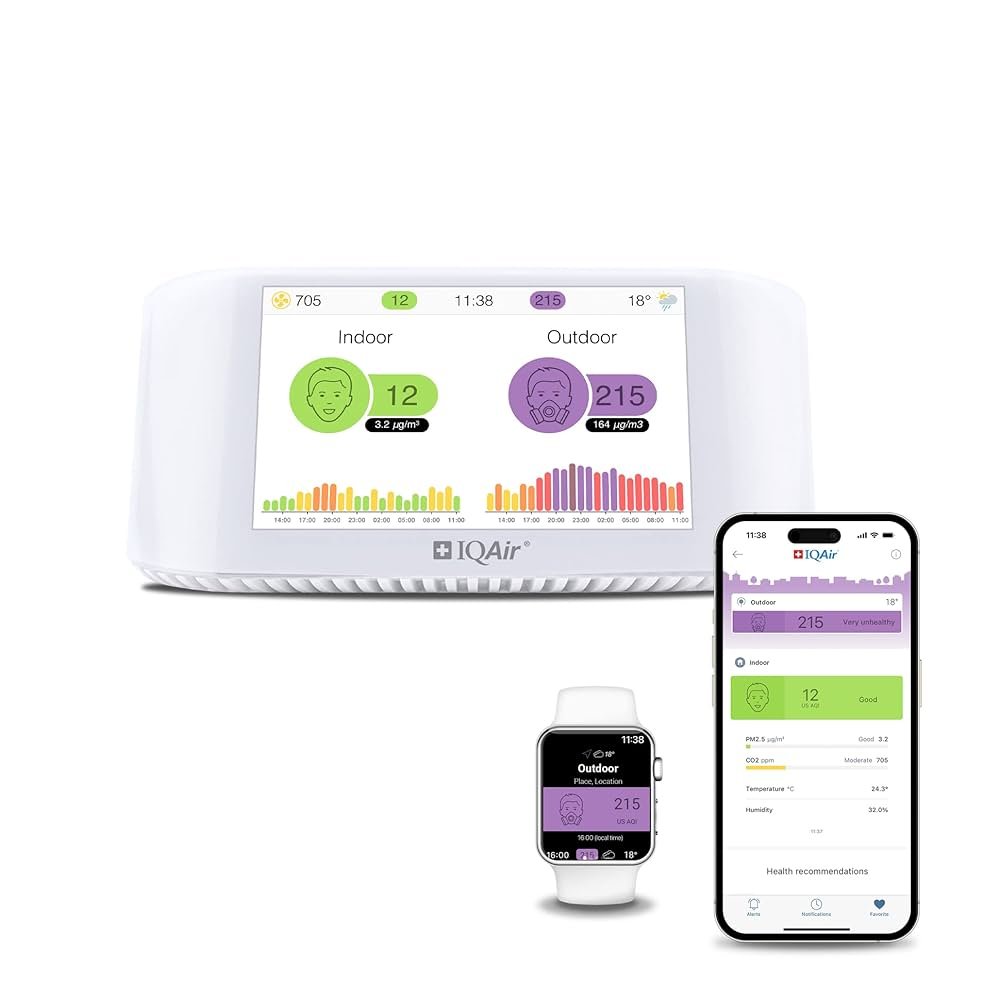
The AirVisual Pro uses a high-precision laser sensor for PM2.5 and a professional-grade sensor for CO2, alongside temperature and humidity tracking.
Why It’s an Essential Tool in 2025:
- Unmatched Indoor/Outdoor Comparison: This is its killer feature. At a single glance, you can see if opening a window will help or hurt your air quality. During a wildfire smoke event or on a high-pollen day, you’ll know instantly to keep your home sealed and your purifiers running. This context is something most other monitors lack.
- Professional-Grade Sensor Accuracy: IQAir puts a heavy emphasis on the quality of its components. The sensors are designed for accuracy and longevity, giving you data you can trust. The device even provides 3-day air quality and weather forecasts, helping you plan your outdoor activities.
- Actionable Health Recommendations: The device doesn’t just show you numbers; it translates them into actionable advice. Based on the pollutant levels, it provides recommendations for different groups (e.g., general population, sensitive groups), suggesting when it’s safe to exercise outdoors or when to limit exposure.
- Global Air Quality Network: Your device contributes to and benefits from IQAir’s massive global network of air quality data, making it part of a worldwide community effort to map air pollution.
Who is this PERFECT for? This is the ideal choice for data enthusiasts, individuals living in areas with significant outdoor air pollution (like cities or areas prone to wildfires), and anyone who wants to make informed, minute-by-minute decisions about ventilation based on a direct comparison of indoor and outdoor air.
Potential Downsides: It does not measure VOCs, formaldehyde, or radon, making it less comprehensive than the Airthings View Plus. Its focus is squarely on PM2.5 and CO2. It also requires a power outlet, offering less placement flexibility.
3. uHoo Aura: The Ultimate Chemical and Virus Detective
When it comes to the sheer number of things it can detect, the uHoo Aura is in a class of its own. If your primary concern is the invisible cocktail of chemicals, gases, and other airborne threats, this is your specialist. The Aura packs an astonishing nine dedicated sensors into its compact, stylish frame, making it the most granular chemical and particle detector on the consumer market.
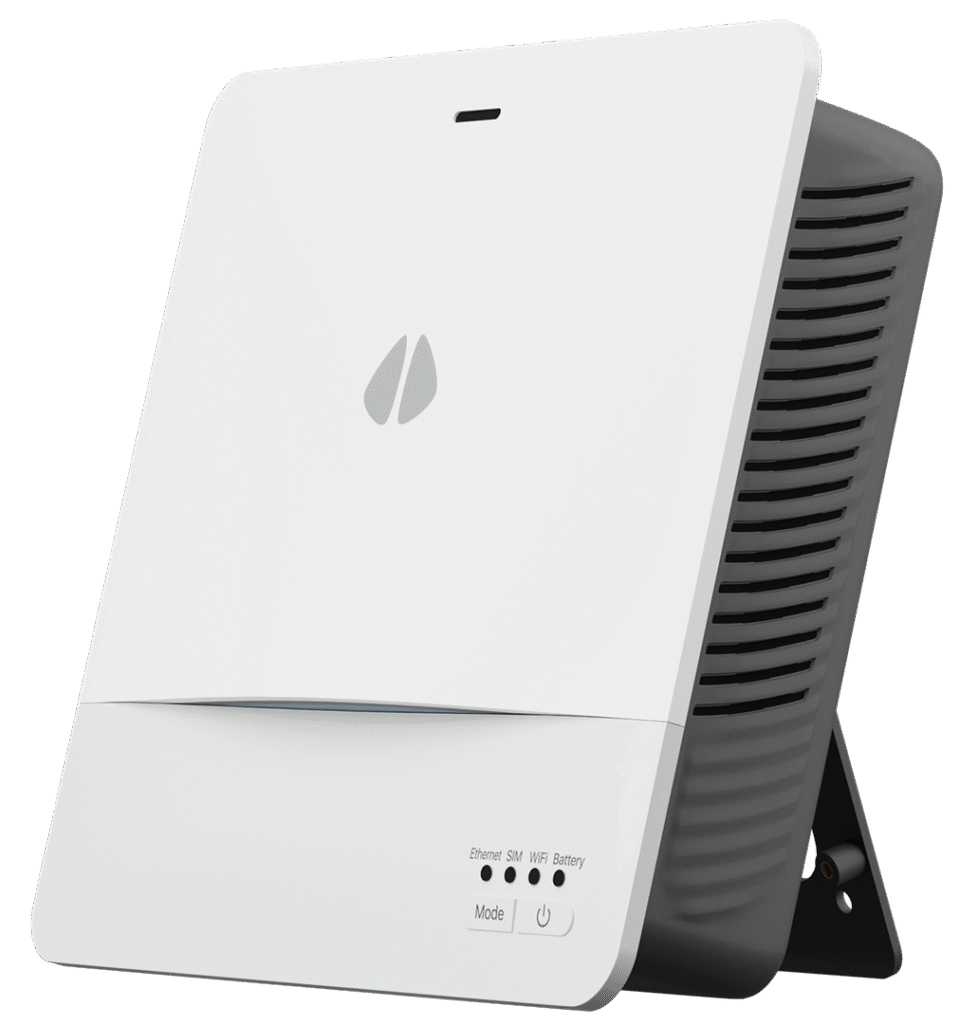
It measures: Temperature, Humidity, PM2.5, Carbon Dioxide (CO2), TVOCs, Formaldehyde (CH2O), Carbon Monoxide (CO), Nitrogen Dioxide (NO2), and Ozone (O3). It also features a patented “Virus Index” that analyzes several air quality factors to score your room’s risk for airborne virus survival and transmission.
Key Advancements That Make It a Top Choice:
- Unrivaled Sensor Array: The inclusion of sensors for pollutants like formaldehyde, nitrogen dioxide (from traffic and gas stoves), and ozone (which can drift indoors or be emitted by some electronics) provides a level of detail other monitors can’t match. This makes it an incredible tool for pinpointing specific pollution sources.
- The uHoo Virus Index: A standout feature, this proprietary algorithm assesses your risk based on key environmental factors that affect virus viability. While it can’t detect viruses themselves, it provides a simple 1-10 score to help you create an environment that is less conducive to their spread—a truly modern wellness feature.
- Smart Home & Building Integration: The uHoo Aura is built for advanced connectivity. It integrates with Alexa, Google Assistant, and IFTTT, but it also has an open API, making it a favorite for smart building automation, allowing it to control smart thermostats, purifiers, and ventilation systems based on its detailed readings.
- Detailed Insights and Analytics: The app provides a wealth of information, allowing you to see how each individual pollutant is trending over time. This granularity is essential for identifying patterns, like a spike in NO2 during cooking or a rise in formaldehyde on a hot, humid day.
Who is this PERFECT for? This is a must-have for the chemically sensitive, those with home offices or workshops, people living near heavy traffic, or anyone who wants the absolute most detailed breakdown of potential gaseous pollutants in their air. For the ultimate health and data geek, the uHoo Aura is unparalleled.
Potential Downsides: The sheer amount of data can be overwhelming for a casual user. It is also one of the more expensive monitors on the market and does not have its own display, relying entirely on the smartphone app.
4. Awair Element: The Wellness and Design Champion
Air quality data doesn’t have to be complicated or intimidating. The Awair Element proves this by wrapping powerful sensors in a beautiful, minimalist package that is designed to blend seamlessly into your life and decor. It prioritizes simplicity and wellness, giving you a straightforward “Air Score” from 1 to 100 and a simple bar graph of lights so you can understand your air quality at a glance.
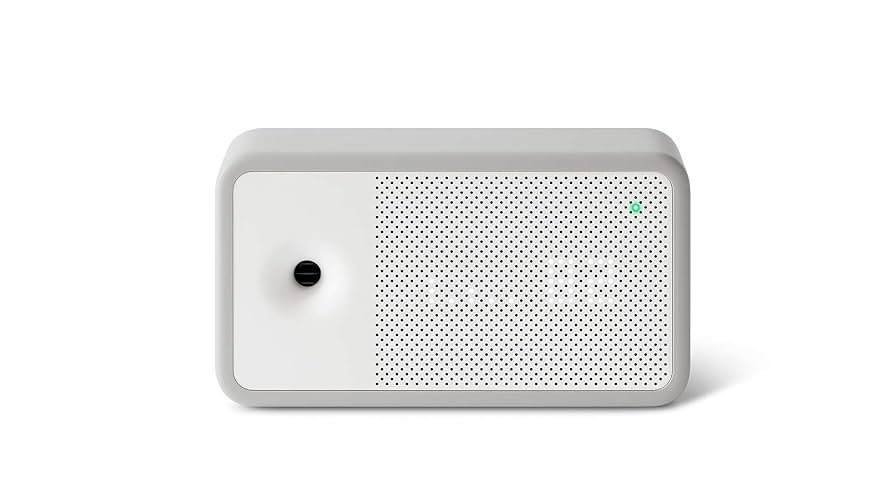
The Element tracks five key factors: Temperature, Humidity, Carbon Dioxide (CO2), Volatile Organic Compounds (tVOCs), and Particulate Matter (PM2.5).
Why It’s a Top Choice for a Modern Home:
- Elegant and Unobtrusive Design: Featuring a real North American walnut wood enclosure and a simple LED dot matrix display, the Awair Element looks less like a scientific instrument and more like a piece of high-end home decor. It’s designed to be seen.
- The Simplicity of the “Awair Score”: While you can dive into the data for each of the five metrics in the app, the device’s main strength is its proprietary 1-100 score. This single number gives you an immediate, holistic understanding of your air quality, making it incredibly user-friendly.
- Focus on Actionable Wellness Insights: The Awair app is designed around building healthy habits. It doesn’t just give you data; it provides tips and articles linked directly to your air quality readings. For example, if your CO2 is high, it might suggest bringing in more houseplants or taking a quick walk outside.
- Strong Smart Home Connectivity: Awair has robust integrations with Amazon Alexa, Google Assistant, and IFTTT, allowing you to easily incorporate air quality monitoring into your existing smart home routines.
Who is this PERFECT for? This is the perfect air quality monitor for the design-conscious individual, the smart home user who values simplicity, and anyone who is new to air quality monitoring and wants a device that is beautiful, easy to understand, and focused on promoting overall wellness without causing data anxiety.
Potential Downsides: It lacks some of the more advanced sensors found in competitors (like radon or formaldehyde). Some data purists might find the single “Awair Score” to be an oversimplification, though detailed data is available in the app.
5. PurpleAir PA-II: The Community-Powered Particle Specialist
For the ultimate enthusiast, the citizen scientist, and the person who wants the most accurate, real-time particulate matter data, the PurpleAir PA-II is a legendary device. What makes PurpleAir unique is its use of two independent laser particle counters. By averaging the readings from both sensors, it provides a level of accuracy and redundancy that is hard to beat in a consumer device.
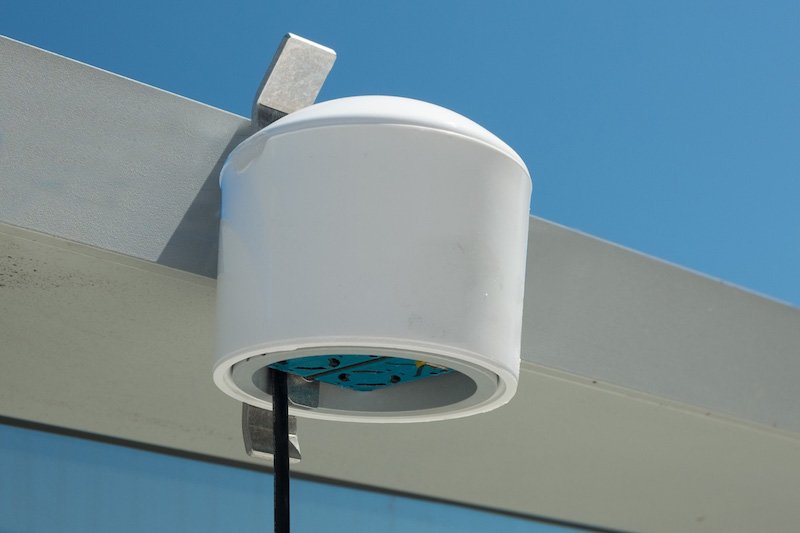
But its true power lies in its network. Every PurpleAir monitor, by default, reports its readings to a publicly accessible global map. This crowdsourced network provides an incredibly granular, real-time view of air quality around the world. The PA-II model is designed for outdoor use but is widely used by experts indoors for its precision.
Why It’s a Niche But Essential Choice:
- Dual-Laser Accuracy: The use of two sensors constantly checking each other’s work is the gold standard for prosumer particle counting. It ensures that you’re getting a highly reliable reading of PM1, PM2.5, and PM10.
- The Power of the PurpleAir Map: Seeing your home’s air quality data live on a public map, right next to your neighbors and your local park, is incredibly powerful. During a smoke event, the PurpleAir map is often the most accurate and up-to-date resource available, even more so than official government monitors.
- Open Data and Community: PurpleAir is built on a philosophy of open data. It’s easy to access your raw data, integrate it into your own projects, and become part of a massive, global community dedicated to monitoring the air we breathe.
- No-Nonsense, Hyper-Focused Design: This device is all about performance. It’s a simple, weather-resistant cylinder designed to do one thing exceptionally well: count particles.
Who is this PERFECT for? This is for the data junkie, the air quality enthusiast, the citizen scientist, and anyone who lives in an area with frequent particle pollution events (wildfires, industrial pollution) and wants the most accurate PM data possible while contributing to a public good.
Potential Downsides: The standard model has no screen and relies entirely on the online map or third-party apps for viewing data, making it less user-friendly for beginners. It also only measures particulate matter, temperature, and humidity—no VOCs or gases.
Breathe Smarter, Live Better: Your Path Forward
The air inside your home is one of the most critical, yet overlooked, factors in your daily health. Ignorance is not bliss; it’s a risk. In 2025, you have the power to pull back the curtain on this invisible world. An advanced air quality monitor from a trusted brand like Airthings, IQAir, uHoo, Awair, or PurpleAir is more than a piece of technology—it’s an instrument of empowerment. It provides the knowledge you need to make simple, effective changes that can lead to better sleep, higher energy levels, fewer allergy symptoms, and profound peace of mind.
Don’t just wonder about the air you and your family are breathing. Know. Take the first, most important step towards a healthier, cleaner, and smarter home.
Ready to experience the difference that clean air can make? Click here to explore more contents like these and also subscribe to MindGearMen.


